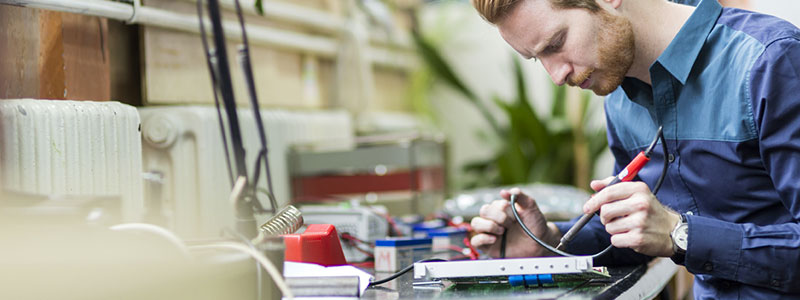WORCESTER – On Thursday, Oct. 4, the Worcester Historical Museum (WHM) will award its annual Harvey Ball Smile award to Cliff Rucker.
WHM is the only organization solely dedicated to preserving all facets of Worcester’s history and sharing that story with both current and future generations. The Harvey Ball Smile award is given out annually to an individual or organization that has made a significant positive impact on the city.
What is interesting to note is many past recipients or organizations that have received this distinguished award have usually had a long time presence in Worcester. However, Rucker only arrived on the Worcester scene in August 2015 when he was exploring the city as one of several sites where he might potentially take ownership of a professional hockey minor league team. In appropriately honoring him, the WHM has recognized what I call – “The Rucker Effect”.
The recent announcement that Worcester will become home to the Boston Red Sox’s Triple A baseball farm team beginning in the spring 2021 baseball season has generated tremendous excitement throughout the city and region. This $240 million economic development project will not only bring a state-of-the-art ball park named Polar Park to Worcester, it will also create jobs and a mixed-use development on property that has been vacant for nearly 30 years. The specifics of this project are included in several stories in this edition of Chamber Exchange, The Newspaper.
This grand slam announcement came to fruition because of the hard work of a number of individuals and organizations. City Manager Edward Augustus, Jr., Larry Lucchino and Denis Dowdle being the three principles were all key with the city manager being the linchpin to the letter of intent between parties. Strong support also came from Lt. Gov. Karyn Polito and the state legislative delegation, the business community through the Chamber of Commerce and Canal District Business Alliance, and leaders such as Michael Angelini as well as others to move this proposal forward.
As I reflect on key moments during this process that began with a City Council resolution and a dinner meeting in Boston with Larry Lucchino, there is another moment that I believe was critical to the success of this effort to bring the Red Sox to Worcester. It was at a Worcester Railers game on Nov. 14, 2017. On this date, the Railers were playing a day game and nearly 5,000 Worcester Public School students would get a special treat and attend a game at no expense to them or the school system. Railers team owner Cliff Rucker had worked with Superintendent Maureen Binienda and team sponsors to make the day happen.
Additionally, Rucker invited the leadership of the Pawtucket Red Sox to attend the game as well and host them in his team box at the DCU Center. The game was exciting, the crowd enthusiastic and loud, the fan game day experience was fun, and the Railers played well. Throughout the DCU Center and on the ice and new jumbotron TV, it was also obvious that Worcester’s business community and important organizations were supporting the Railers through sponsorships and advertising. Rucker mingled throughout the game with the Red Sox leadership and spoke about his experiences in taking an ECHL expansion team with no name to the point where the Railers were receiving strong support from the fan base and corporate community here in Worcester and Central Mass. Each and every member of the Red Sox team commented how impressed they were with the atmosphere of the game and how the Railers were being supported by the business community. This would be a key factor in the Red Sox’s decision on whether they themselves would come to Worcester. Would the Worcester business community support and sponsor the team?
Several of us commented to the Red Sox leadership, “imagine what you could do with the Red Sox brand if you approach things in Worcester the same way as Cliff.” At that moment in those conversations with the Red Sox leadership, you could sense that they believed the local business community might be able to support the team in the manner in which the corporate community was supporting the team in Rhode Island. It was also at that moment that I recognized the positive impact Rucker’s commitment to Worcester was having in a new and different way. It is what I call the “Rucker Effect”. Simply, Rucker’s success was facilitating additional opportunities and potential wins for the city and region.
I was first asked to meet with Rucker in 2015 by his consultant Steve Ryan, a fellow alum of Fordham University and former NHL executive, to discuss Worcester as a possible location for a minor league pro hockey team. However, it has been Rucker’s significant subsequent investments in addition to the Railers, which have had a dramatic impact on Worcester‘s skyline and psyche. The Rucker Effect, as I call it, has many people, property owners and leaders in the community thinking about what we can accomplish individually and collectively. The Rucker Effect has raised the bar on our expectations to improve the city economically, educationally, aesthetically and by strengthening the fabric of our community in a way that brings people together.
As a city, we have made tangible progress in taking on big projects relating to economic development, transportation, and in brownfields cleanup over the past 20 years. Collaboration and a can-do spirit has been the recipe of these successes. Gateway Park, City Square, South Worcester Industrial Park, additional MBTA trains, a growing airport are just a few examples.
Rucker ‘s private sector investments since 2015 have validated our collaborative efforts and can-do spirit. His investments include the construction of a $22 million Fidelity Bank Worcester Ice Center in the Canal District; the acquisition and cleanup of the old St. John’s High School property; the $2 million plus renovation of the Railers Tavern on Commercial Street; the acquisition of the Central Exchange Building on Main Street as well as the acquisition and several million dollar rehabilitation of the Palladium.
As a lifelong Worcester resident, what makes these commitments by Rucker so significant is that he has been a successful business person, recognized a growing momentum in our city, and wanted to be a meaningful part of it. His presence has accelerated the pace of development. Moreover, his investments have caught the eye of other outside developers and brokers, which has lead to additional development investment. These investments have created jobs and expanded the city’s tax base, however, equally important they have also inspired downtown property owners to consider making improvements to their own buildings. These are examples of the Rucker Effect.
Following a business meeting I attended earlier this year, I was speaking with two prominent business leaders whose families and businesses have been in Worcester for generations. I mentioned that I was going to the Railer’s game that evening. One of the individuals said, “what Cliff Rucker is doing is incredible!” The other individual said, “I know it means we all have to step up and do more as well.” I can say both of these individuals and their businesses have done more since that conversation.
As important as Rucker‘s investments are in the city and how this Danvers businessman and investor has helped stimulate increased development in the sense of higher expectations for many, what is equally important is the way he has gotten involved along with his family to strengthen our community. The Railers Foundation funds numerous youth and educational initiatives. Rucker serves on the board of St. Vincent Hospital and YOU. Inc., which provides programs for kids and young adults facing challenges. Moreover, Rucker worked directly with Superintendent Maureen Binienda to create the Skate to Success program, of which 2,400 students from the public schools participated this past year. Students were taught to skate at no cost. The visits to the rink to learn to skate included academic lessons and a lunch at Nonna’s Pizza at no expense to the kids or the schools.
While there is more work ahead to improve our local economy and provide good jobs that give families an opportunity for economic mobility and a level of economic security, we can be optimistic with people like Cliff Rucker on our team the sky is the limit. Congratulations to the Worcester Historical Museum for honoring him next month with the 2018 Harvey Ball Smile Award. The Rucker Effect has us all smiling a little more these days.
– Timothy P. Murray is President & CEO of the Worcester Regional Chamber of Commerce.


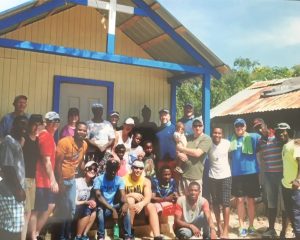
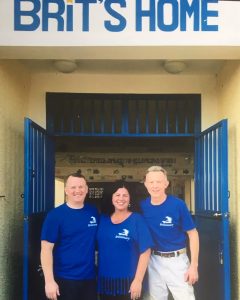
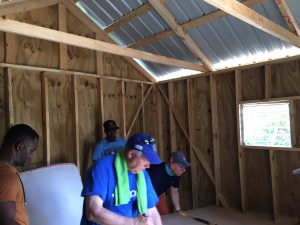

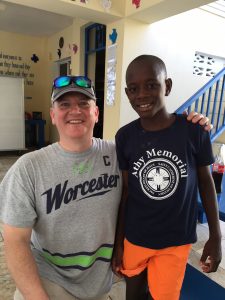

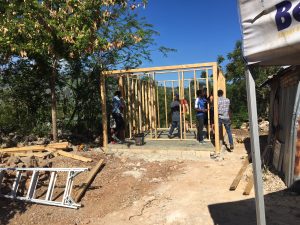

 Wisely, this area was included in the Worcester Redevelopment Authority’s Urban Revitalization Plan, which was adopted by the Worcester City Council, and allows for the use of eminent domain to acquire these long standing vacant properties. The Chamber strongly supported the creation of the Urban Revitalization Plan as well.
Wisely, this area was included in the Worcester Redevelopment Authority’s Urban Revitalization Plan, which was adopted by the Worcester City Council, and allows for the use of eminent domain to acquire these long standing vacant properties. The Chamber strongly supported the creation of the Urban Revitalization Plan as well.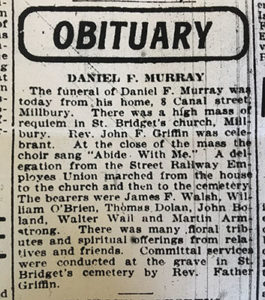 On July 5th, 1916, my great grandfather Dan Murray died at Worcester City Hospital as a result of a broken neck that he sustained repairing a trolley as an employee of the Worcester Consolidated Railway Company. He was 46 years old. The Worcester Evening Gazette reported about his death on the front page of their July 8th edition, and his obituary appeared in the Worcester Telegram the same day. The work accident occurred in the trolley garage on Market Street in Worcester. Market Street is no longer in existence and the MCPHS University dorm and academic space near Lincoln Square stands where the trolley garage was once located. The Worcester Consolidated Railway Company is today known as the Worcester Regional Transit Authority, as buses replaced the trolley in later years. He was a member of the Street Railway Employees Union which today is known as the
On July 5th, 1916, my great grandfather Dan Murray died at Worcester City Hospital as a result of a broken neck that he sustained repairing a trolley as an employee of the Worcester Consolidated Railway Company. He was 46 years old. The Worcester Evening Gazette reported about his death on the front page of their July 8th edition, and his obituary appeared in the Worcester Telegram the same day. The work accident occurred in the trolley garage on Market Street in Worcester. Market Street is no longer in existence and the MCPHS University dorm and academic space near Lincoln Square stands where the trolley garage was once located. The Worcester Consolidated Railway Company is today known as the Worcester Regional Transit Authority, as buses replaced the trolley in later years. He was a member of the Street Railway Employees Union which today is known as the 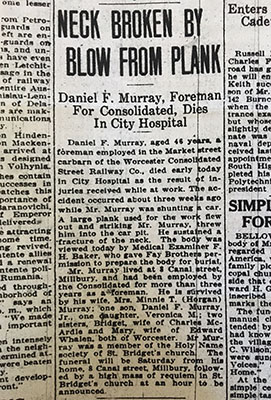 Labor, Business and Government leaders that sought consensus and advocated for the establishment of the workers compensation system and social security survivor benefits for those injured at work, or who died because of a work related injury.
Labor, Business and Government leaders that sought consensus and advocated for the establishment of the workers compensation system and social security survivor benefits for those injured at work, or who died because of a work related injury.